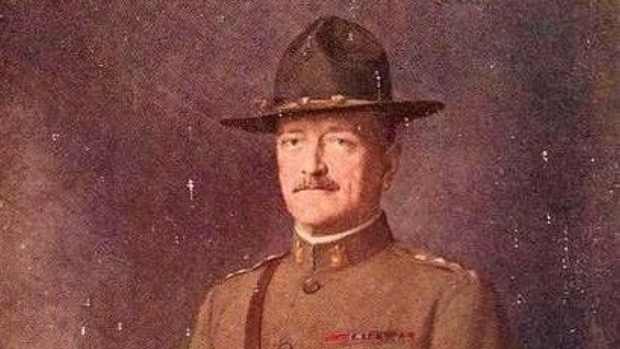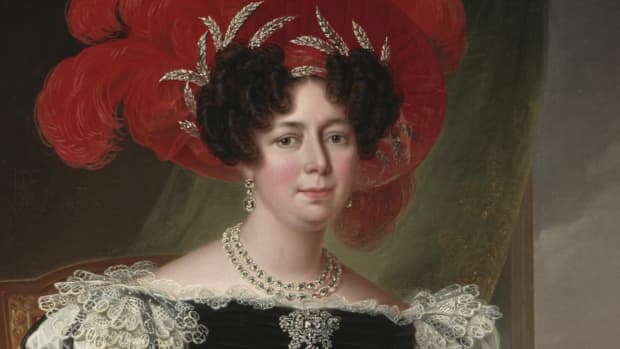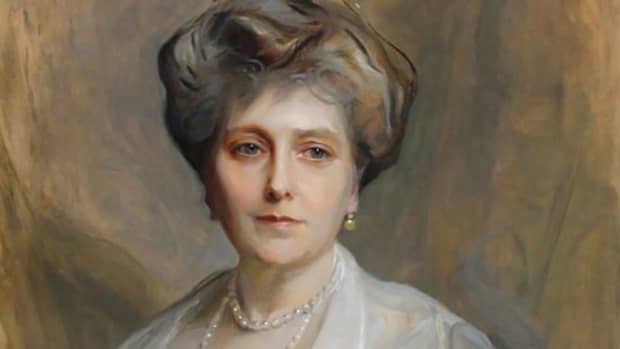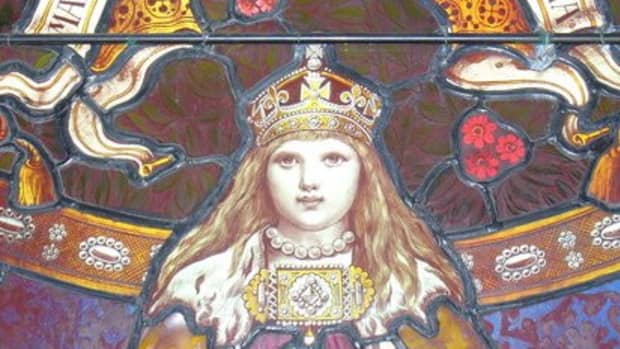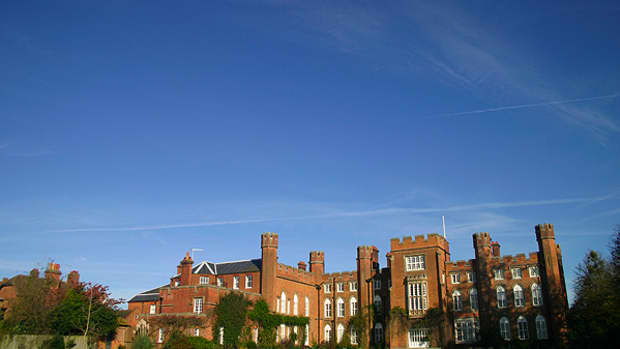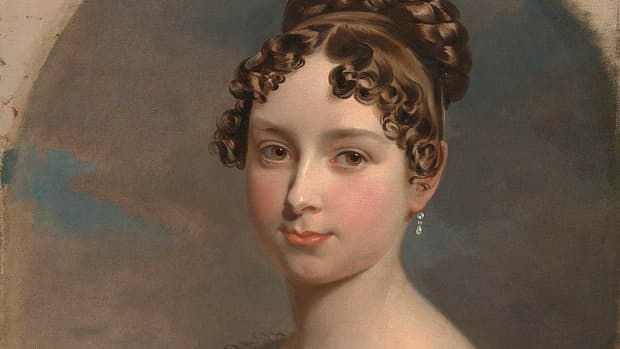Maud, Princess of Wales, Queen of Norway
Princess Maud of Wales
Princess Maud Charlotte Mary Victoria of Wales was the youngest daughter of King Edward VII and his wife Alexandra of Denmark (at the time of her arrival, the Prince and Princess of Wales).
She was born at Marlborough House, her parents' lively London home, on the 26th of November 1869. Her christening was held on Christmas Eve of the same year. As was customary, she had numerous duchesses, princes, tsars and kings as her godparents. Her paternal grandmother was Queen Victoria, and her maternal grandparents were the king and queen of Denmark.
Maud's older siblings were Albert Victor, George, Louise and Victoria, and the 5 of them were known collectively as the Wales'. Their younger brother, Alexander John, died in April 1871. George became King George V in 1910.
1st Cousin Prince Carl of Denmark
The Wales' children were remarkable for being noisy, athletic and unapologetic about their behaviour. Their spirited play was encouraged by their parents much to the horror of Queen Victoria who much preferred the notion of children being seen but not heard. Maud, a tomboy was often the loudest in the group and the family awarded her the nickname Harry after the noted admiral Henry "Harry" Keppel, son of the 4th Earl of Albemarle. (King Edward VII later had an affair with Alice Keppel, the daughter-in-law of William Keppel, 7th Earl of Albemarle).
There's an anecdote that a 21-year-old Maud caused a scandal in 1891 when she lit a cigarette in broad daylight. She was an unmarried woman and the apparent etiquette faux pas caused some of the older ladies-in-waiting to faint. Maud knew that she'd create a scene but she didn't care.
The Wales' enjoyed frequent trips to Denmark and they were familiar with their Danish cousins from an early age. This included her 1st cousin Prince Carl of Denmark, the 2nd son of King Frederick VIII. He was 3 years younger than her and by the 1890s he was pursuing a naval career. A love match, their engagement was officially announced in late October 1895.
Appleton House, Sandringham
Carl and Maud's wedding was conducted in the private chapel at Buckingham Palace on the 22nd July 1896. Maud's gown was white satin with grey embroidery and her lace veil was a gift from Queen Victoria.
Maud's father made a wedding gift to her of a substantial brick pile named Appleton House on the Sandringham estate, previously occupied by a troublesome tenant Louisa "Louise" Cresswell who styled herself the "The Lady Farmer." Mrs. Cresswell cared little that her landlord was the future king and banned him from hunting on her farmland.
The newlyweds honeymooned at Appleton House and remained there for 5 months after the wedding. Maud was so reluctant to leave England for an unknown life in Denmark that it was only around Christmas 1896 that Maud made the break with her English relations and home.
Split Royal Life: Denmark and England
In Denmark, Carl and Maud's home was the 18th-century Bernsdorff Palace near Copenhagen (today, it's a hotel). Carl, a First Lieutenant since 1894, resumed his naval career as Maud settled into her new life. She was interested in interior design and fashion. The couple's only child was Prince Alexander of Denmark, born on the 2nd of July 1903 at Appleton House.
She loathed the cold winters in Denmark, and she quickly made it a habit to install herself at Appleton House each winter. She also made numerous trips to England in the warmer months. Her heart remained at Sandringham and Appleton House.
King Haakon VII and Queen Maud of Norway
In 1905, Sweden and Norway's political union was dissolved. The Bernadotte dynasty continued to rule in Sweden, but a new monarch was sought from the royal houses of Europe for Norway.
Prince Carl was approached about becoming king because he was well connected to other royal houses, was the son of a king and a son-in-law of King Edward VII (Edward ascended to the British throne in January 1901), and had Norwegian ancestry. A referendum signalled that 79% of the Norwegian population approved of him.
Carl chose to rule under the name Haakon VII, Maud, his queen consort, retained her name, and toddler Alexander became Crown Prince Olav of Norway. Their coronation was held at the Nidaros Cathedral in Trondheim on the 22nd of June 1906. Their bloodline continues.
Danish, British and Norwegian Royals
Haakon and Maud realised that they needed to present themselves as Norwegians to their subjects, so photographs of them in traditional Norwegian costumes and records of them keenly pursuing winter sports were regularly circulated. Maud truly did love winter sports.
The family learned the language, although Maud was less fluent than Haakon and Olav. Olav was raised as a privileged child of Norway and, as was expected, he in due course joined the Norwegian Army. Stylish Maud became noted for her admirable use of jewels and clothes to instill confidence and respect in the monarchy.
Although an exuberant woman around the people she knew well, there are no records of her making public speeches, no recordings of her voice and she was thought of as quiet and a little aloof by her people.
However, she was capable and admired. She championed causes that resonated with her including the welfare of unmarried women and women's rights. During World War I, she worked hard to aid the war afflicted through an organisation she set up, the Queen's Relief Committee (in Norwegian: Dronningens Hjelpekomite).
Queen Maud's Final Visits to England
Maud returned to England in 1937 for the coronation of her nephew King George VI, this was her final public event in her birthland. She travelled to London privately in October 1938 and fell ill whilst staying at a hotel. Abdominal surgery was carried out and her situation appeared hopeful at first. Maud died in a nursing home on the 20th November 1938. This date marked the 13th anniversary of her mother's death. It was just 6 days before what would have been Maud's 69th birthday.
She received full royal honours as her body was transported to Portsmouth to sail back to Oslo where her funeral and burial in the Royal Mausoleum in Akershus Castle and Fortress were carried out. In 1957 Haakon was laid to rest beside Maud.
She was so well organised that she had already purchased all of her family and friends' Christmas presents for 1938 before her visit to England.
Appleton House was returned to the nation and it was torn down in 1984.
Alexander ruled after his father as King Olav V from 21st September 1957 until his death on the 17th January 1991. His son Harald V is still king and the heir is another Haakon, named in honour of his great grandfather.
Sources
- Maud of Wales - The unexpected Queen of Norway - History of Royal Women
- Queen Maud – 150 years – Nasjonalmuseet
- Maud of Wales, Queen of Norway | Unofficial Royalty
This content is accurate and true to the best of the author’s knowledge and is not meant to substitute for formal and individualized advice from a qualified professional.
© 2022 Joanne Hayle




